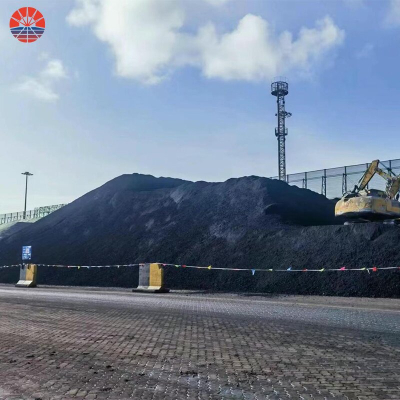The United States and Japan have alternative strategies for new regulations on graphite exports?
Starting from December, the Ministry of Commerce and the General Administration of Customs issued the "About Optimizing and Adjusting the Temporary Export Control Measures for Graphite Items".
The specific content of this measure is: high-purity, high-strength, high-density artificial graphite materials and their production
Products, as well as natural flake graphite and its products (including spheroidized graphite, expanded graphite, etc.) are officially included in the export control checklist.
The measure was introduced at a time when the European Union launched a countervailing investigation into new energy vehicles and the United States tightened its chip production.
In the face of speculation from foreign media, the Ministry of Commerce made it clear: “This export control does not target any specific country and regions, and the control is not a ban. Products used for national economic purposes abroad can be exported with normal approval.
Since the Ministry of Commerce announced the measure on October 20, the electric vehicle industry in Japan, South Korea and the United States has the discussion has been going on for more than a month, and I can't sleep or eat well, as if I'm facing a formidable enemy.
Graphite is an essential raw material for manufacturing lithium battery anodes for electric vehicles.There are two types of graphite materials used in batteries.The first one is natural graphite collected by mining, and the second one is "artificial graphite" synthesized from petroleum and other raw materials.
Since 2018, global demand for battery graphite has increased by 250%. With the rapid development of the electric vehicle market is growing rapidly and demand will continue to increase.
According to data from "Benchmark Mineral Intelligence", China is the world's largest natural graphite processor, producing in 2022.Nearly 70% of the world's artificial graphite dominates the global graphite supply chain and is the major contributor to the new energy vehicle industry in Japan and the United States.Raw material importing countries that cannot be avoided.
Let’s talk about Japan first. 80% of Japan’s natural graphite imports every year come from China, so Japan is extremely concerned about China’s stone.Mexico’s export policy has also been looking for ways to replace Chinese graphite. They have four response plans:
The first is to set up a local factory in China for production. According to Nikkei News, if graphite imports encounter stagnation, Mitsubishi Chemical.They will consider opening anode material production in a Shandong factory;
The second is to find new supply sources. Panasonic’s energy company is currently working with Canadian graphite companies.Research on negative electrode materials;
The third is diplomatic mediation, through the summit between the two countries, establishing a dialogue mechanism to deal with controls, with the trade officials responsible for regular consultations with officials;
The fourth is to subsidize self-research. Japan’s Ministry of Economy, Trade and Industry will supplement its budget with 260 billion yen in 2023 to subsidize self-research.
Stick to domestic battery manufacturing and research and development.
Looking at the United States, the United States also relies heavily on imported graphite. Producing a battery for an ordinary electric vehicle requires about
For 80 to 90 kilograms of graphite, several major lithium battery factories in the United States require 1.2 million tons of graphite materials every year.
According to Barron's, China mined 850,000 tons of natural graphite in 2022, accounting for approximately 65% of the world's total production.
Since natural graphite is not mined or produced in the United States, about 33% of imports come from China, followed by Mexico and Canada’s 18% and 17%.
Faced with export controls, the United States is also looking for alternatives. They are approaching Mozambique and Madagascar in Africa.
In contact, these two countries are the second and third largest natural graphite mining countries in the world, with output in 2022 of 170,000 tons and 110,000 tons respectively.
Although Africa's output is considerable, mining graphite requires a lot of investment, and it is difficult to form a large-scale supply in the short term;
At the same time, the United States is also setting up factories across the country to increase investment in synthetic graphite.
In the short term, the new graphite export regulations implemented on December 1 will not have much impact on Japanese and American new energy vehicle companies, because their inventory will last for a while.
In the medium term, as the international situation eases, relevant policies may also be adjusted.
In the long run, Japan and the United States' separate efforts to find countermeasures will not have a fundamental impact on the graphite trade pattern.Sun Qing, honorary president of the China Carbon Industry Association, recently told the media that “Globally, China’s China has the largest reserves of natural flake graphite and the best quality. It is similar to rare earths and cannot be easily shaken by others advantages.So we must learn from the experience and lessons learned from rare earths and cannot develop without restraint and without processing or export it at a low price after rough processing. "


